
Thyme spice: key for Middle East trade and B2B marketplace growth.
Thyme is one of the spices used in cooking and food industry. This spice is extracted from the thyme plant, which is a small shrub with small, aromatic leaves. Thyme is used as a popular spice in various cooking styles, including Eastern and Western cooking. Thyme has an aromatic flavor that can add more depth and variety to dishes. This spice is used as a flavoring in various foods such as sauces, stews, soups and meat dishes. As a natural ingredient, thyme may be used in the production of health products such as soaps, cosmetic oils, and skin care products. Its antibacterial and anti-inflammatory properties can be useful in these products.
Thyme has natural antibacterial properties. This property can help protect food against bacterial growth and maintain food safety. In addition to being used in cooking, thyme is also used as a medicinal plant. This plant has relaxing properties and may be useful in relieving stress and anxiety. Some studies have shown that thyme may have anti-inflammatory and antioxidant properties. These properties can help reduce body inflammations and maintain general health.
Thyme is one of the popular spices in the food industry and has a significant export value. Exporting thyme to other countries can be a good opportunity to earn money and develop business. To start the activity in thyme export, you need to prepare the thyme product. For this purpose, you can grow your own thyme or buy from thyme growers in areas that have the right conditions for growing thyme. Before starting the export activity, you should carefully study the laws and regulations related to the export of thyme. Each country may have different laws regarding the import of thyme. Make sure you are familiar with the relevant laws in your home country and the destination country.
Researching target markets can help you identify export demand for thyme. These markets can be countries where thyme is popular in cooking and food industry. Establishing business relationships with buyers and import traders in target markets is very important. You can try to discover and connect with your target markets through trade shows, industry events, websites and social networks. To export thyme, you need to plan proper transportation. Product packaging is very important in international shipping. Also, to export thyme, you need to prepare the necessary export documents, including commercial invoices, bills of lading and required certificates.
Phytosanit regulations are related to the control of pathogens and plant pests in exported plant products. You must ensure that your thyme is protected from pathogens and pests and comply with the phytosanitary regulations of the destination country. Finally, you may need legal and financial advice. A lawyer or business consultant can help you with legal and financial matters related to the export of thyme and learn about export regulations and laws. Considering the complexities and issues related to international trade, establishing contact with relevant government organizations and institutions and using business consulting services can help in the success of thyme export.
Türkiye is one of the largest producers of thyme in the world. This country widely cultivates thyme in different regions and has a significant export in this field. China is also known as one of the largest producers of thyme in the world. Areas such as Gansu Province and Shaanxi Province are famous in China, where thyme cultivation is widespread. India also has a significant place in the production of thyme. Regions like Rajasthan, Gujarat and Madhya Pradesh in India are active in thyme cultivation. Iran also has a good position in the production of thyme. Provinces such as Kerman, Yazd, Sistan and Baluchistan and South Khorasan in Iran are very active in thyme production.
America is one of the largest thyme consumer markets in the world. The use of thyme in the food industry and cooking is common in America. Germany is also known as one of the largest consumers of thyme in the world. The use of thyme is very common in German cuisine and related industries. France is also an important market for thyme consumption. Thyme is used in French cooking and similar food industries. India is also known as one of the largest consumers of thyme in the world. Thyme is used in Indian cooking and related food industries.
-

Cumin trade plays a significant role in the global spice market, with major producers including India, Nigeria, Bangladesh, China, and Thailand. India stands out as the largest exporter, while the United States, Germany, Canada, and Middle Eastern countries are key importers. The competitive landscape of cumin trade involves various marketing strategies such as advertising and quality improvement. Technological advancements in production and packaging are also influencing market dynamics. Cumin is not only valued for its culinary uses but also for its medicinal properties, making it popular in food and cosmetic industries. Its demand is driven by its flavoring capabilities and health benefits. Factors affecting cumin trade include weather conditions, pest issues, trade regulations, and global supply-demand fluctuations. Prices are subject to change based on these variables and seasonal harvests. For detailed insights into current trends and statistics in cumin trade, specialized sources like the WTO or WHO can be consulted.
-
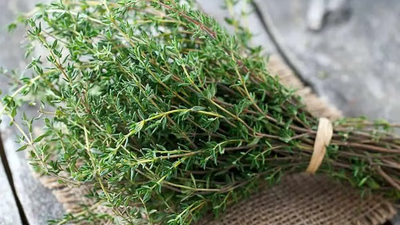
Thyme is a versatile spice with significant export potential, widely used in cooking and health products. Its antibacterial properties enhance food safety, making it valuable in the food industry. Exporting thyme requires understanding local and international regulations, identifying target markets, and establishing relationships with buyers. Key producing countries include Türkiye, China, India, and Iran, while major consumer markets are in America, Germany, France, and India. Successful thyme export involves proper product preparation, packaging for international shipping, and compliance with phytosanitary regulations. Engaging legal and financial advisors can facilitate navigating the complexities of international trade.
-
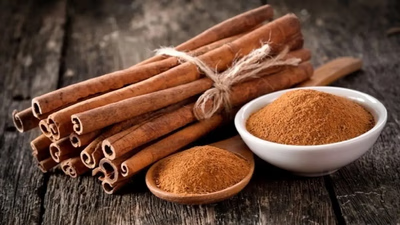
Cinnamon, a globally popular spice, is derived from the inner bark of cinnamon trees and is extensively used in various culinary applications. Major producers include Sri Lanka, China, Vietnam, Indonesia, and Madagascar, with global production estimated at 30-35 thousand tons annually. Key exporters are Indonesia, China, Vietnam, and Sri Lanka, primarily shipping to Europe (Netherlands, Germany, UK), North America (USA), and the Middle East (Saudi Arabia, UAE). Market dynamics such as quality standards, pricing, demand variations, and health regulations significantly influence cinnamon trade. Compliance with international trade laws—including customs tariffs and sanitary regulations—is crucial for successful export operations. Quality assurance standards like ISO 9001 and HACCP are essential for meeting market requirements. Additionally, sustainable practices in resource management are increasingly important in the cinnamon industry. The spice is valued not only for its flavor but also for its medicinal properties; it has antiseptic qualities and contains anti-inflammatory compounds beneficial for health.
Entering the cinnamon market requires thorough research on suppliers and target markets to establish reliable business relationships. Businesses must decide between wholesale or retail operations while ensuring high-quality products with appealing packaging. Effective marketing strategies through online platforms and trade events can enhance visibility in a competitive landscape. Continuous monitoring of market performance is vital for adapting to consumer preferences and competition.
-
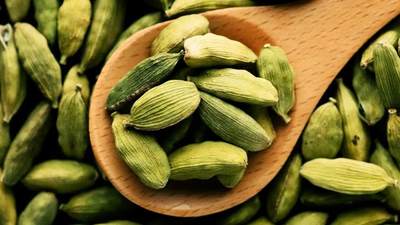
Cardamom, a highly valued spice from the ginger family, is primarily cultivated in India and Sri Lanka, with significant production in Thailand, Vietnam, and Guatemala. It is used extensively in cooking and beverages, known for its flavor and medicinal properties. The spice market sees active trade of cardamom, which can be exported in bulk or packaged. Factors influencing its price include quality, type (green or black), and geographical conditions affecting production. The demand for cardamom has surged due to its culinary versatility and health benefits. Quality control is crucial in the cardamom trade; traders must ensure high standards through careful selection based on appearance, aroma, and moisture content. Establishing reliable relationships with producers is essential for consistent supply. Effective marketing strategies are necessary for selling cardamom, utilizing online platforms and trade shows to reach customers. Proper storage and distribution practices are vital to maintain quality post-purchase.
-
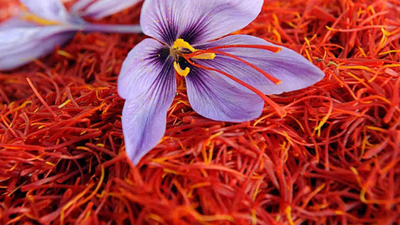
Saffron, derived from the saffron flower, is one of the world"s most expensive spices, renowned for its flavor, color, and aroma. It boasts antioxidant and anti-inflammatory properties and is primarily produced in Iran, followed by Spain, India, and other countries. The spice"s international trade is influenced by quality standards such as ISO 3632 and market demand. Countries with lower saffron production often rely on imports to meet consumption needs. Understanding market dynamics, including competitors and regulations, is crucial for successful saffron exportation. Conducting thorough research on target markets helps identify opportunities and challenges. Engaging with local experts and attending industry trade fairs can enhance market insights and networking opportunities. Proper packaging and documentation are essential for customer satisfaction and compliance with export requirements. Establishing business relationships in target countries can facilitate distribution networks while diverse marketing strategies can boost visibility.
-
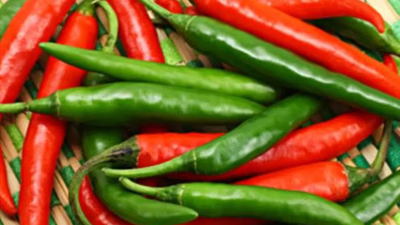
Pepper is a crucial spice in global trade, with production concentrated in countries like India, Vietnam, and Brazil. The annual global output ranges from 4-5 million tons, primarily exported to North America, Europe, Asia, and the Persian Gulf. The trade dynamics are influenced by various factors including quality standards, market demand, and consumer perceptions. Different types of pepper—black, white, red—each have unique properties and uses in the food industry. Quality assurance is vital; pepper must meet international standards for purity and packaging to ensure longevity during transport. Establishing strong relationships with producers and traders is essential for success in this competitive market. Innovations in cultivation and processing can enhance product value. Effective marketing strategies such as brand building and market analysis are necessary to navigate pricing and demand fluctuations.
Compliance with export regulations is critical to avoid legal issues. Understanding the specific needs of target markets will facilitate better trading outcomes.
-
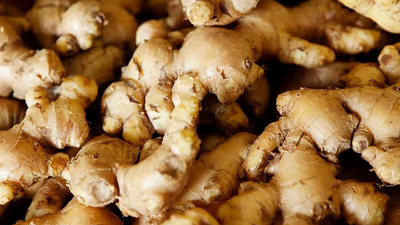
Ginger holds a significant position in the global spice trade, with major producers including India, Nigeria, China, and Thailand. The market for ginger has expanded due to its flavoring and health benefits, leading to increased demand across various industries such as food and beverages. As a versatile spice, ginger is utilized in baking, confectionery, and nutritional supplements. The growth of the ginger market is attributed to rising consumer awareness of its health properties and improved international trade infrastructure. However, challenges such as climate change impacts on productivity and trade regulations can affect supply chains. India stands out as the largest exporter of ginger globally, while other countries like Thailand and Brazil also contribute significantly to exports. The price of ginger fluctuates based on supply-demand dynamics, weather conditions, and economic factors. Additionally, specific regulations govern the export-import process of ginger, including quality standards related to moisture levels and packaging requirements. Understanding these factors is crucial for businesses engaged in the ginger trade.







